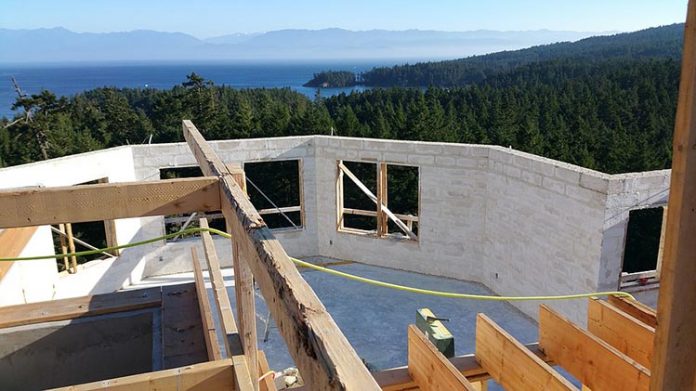As cannabis is being legalized and gaining recreational and medicinal use in more and more areas, it is also showing potential to transform the building sector. Another variety, Cannabis sativa, is a fast-growing, weed-like plant that flourishes in a wide range of climates and soil conditions. It can grow up to 15 feet with stalks an inch in diameter. For building purposes, it is the plant’s inner layer that gets combined with lime and water to be made into construction material.
One application is as an infill insulation. Another recently developed product with even greater promise is a large, lightweight (22 lbs.), structural interlocking block. Its dimensions are 8 inches high, 21 inches wide, and 11 inches thick. In appearance it looks like a giant Lego. Labor costs are reduced because the interlocking nubs and lesser weight make for fast assembly. When modification is required, it can be cut with woodworking tools. In addition to its high load-bearing capacity, it is highly resistant to fire, mold, and insect damage. It is considered almost soundproof. The only caveat to its use is it can’t be used for a foundation.
The green features of these prefab hemp composite blocks (developed by JustBioFiber Structural Solutions) are impressive:
• Its high insulative value (minimum R-28) cuts heating and cooling loads by 60 percent.
• The fast-growing cycle of sativa hemp, approximately four months, make it more productive than a typical forest while at the same time capturing more carbon dioxide.
• Hemp’s deep root structure improves soil structure while needing almost no chemical fertilizers or pesticides.
• Thirty-two of these blocks (a cubic meter of material) sequester a net 250-300 pounds of carbon. This product is part of a class of natural fiber composite building materials receiving a negative carbon material classification, and among these it is a top performer.
• The exteriors and interiors of these structural block walls are typically covered with lime plaster, creating a breathable, nontoxic system that produces a wholesome indoor environment by regulating temperature and humidity.
• Its thermal mass dampens temperature swings, making it an ideal shell for zero-net-energy buildings.
Hemp in construction has an ancient history. Bridges, for instance, were made with hemp mortar in ancient Gaul during the sixth century. Today it is starting to be used regularly in Europe and Canada. A seven-story office tower incorporating it was recently completed in France. There are now about 50 homes built with hemp in the U.S. The biggest barrier is legalization. This January, California legalized use of the plant in full. The federal farm legislation of 2014 allowed hemp’s cultivation for some research purposes, but to build with hemp requires a special permit. Efforts are intensifying to get hemp certified by building codes, thus ending the current one-off approval process.














